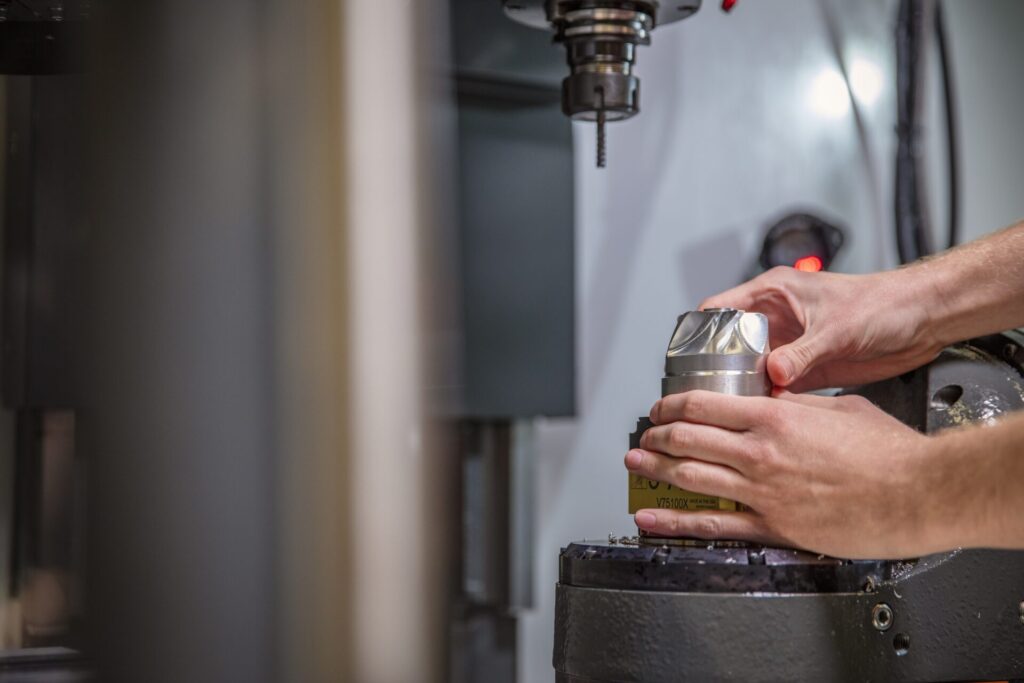& Construction

Integrated BIM tools, including Revit, AutoCAD, and Civil 3D
& Manufacturing

Professional CAD/CAM tools built on Inventor and AutoCAD
4 min read
This post is also available in: Deutsch (German)
Explore why Romar Engineering “can do everything [they] need to do in Fusion 360” for their micro-molding and silicone injection molding projects.

Based in Sydney Australia, Romar Engineering has gone through several transformations since it started in 1968. First as a garage shop, the company originally made tools for both injection and compression molding to manufacture car panels, interiors, and more. After several pivots over the years, Romar Engineering is now in the niche space of micro-molding and silicone injection molding.
Now, Romar Engineering manufactures a host of highly specific silicone products. They are Australia’s largest producer of silicone consumables for IVF and supply to the rail industry, defense projects, and consumer goods. Their growth is fueling further expansion and scope to pursue 3D printing and the design and manufacturing of fluid and motion controls for space applications. A new government grant is also advancing its production of space valves.
Romar Engineering’s manufacturing and testing capabilities are extensive. Their centerpiece is the Lasertec, with its hybrid, 5-axis CNC coupled with a powder deposition nozzle. They also use a GE Concept Laser M2 Series for metal additive manufacturing. And, of course, a multi-tasking lathe, 3-axis mills, and many injection molding presses are also on site.
Steve Milanoski, head of advanced manufacturing at Romar Engineering, joined the company three years ago. Most recently, he spent eight years at SpaceX where he designed fluid and motion control devices for the Merlin 1D engine, including 3D printing and flying the first metal, 3D-printed part in space.
He noticed right away that Romar Engineering needed another transformation for the company to see continued success — and it was a digital one.
“We have since started doing design work, but when I first got here, we were only a contract manufacturer,” Milanoski says. “We had a smorgasbord of CAD packages. We had SolidWorks, a bunch of Creo seats, and another seat for the software to drive the Lasertec. Nobody really spoke the same language.”
“If you had a file that wasn’t in the right format or somebody was using the license, it was just a nightmare,” he continues. “There was no revision control or central repository.”
Early on, Milanoski did a full review of the products on the market, including Autodesk Fusion 360, Onshape, and BobCAD.
“After about two or three days of playing with Fusion 360 and also being familiar with engineering organizations using CATIA, Creo, Windchill, NX, or Teamcenter, it was pretty obvious,” he says. “I thought, ‘Oh wow, Fusion 360 can kill about 95% of the problems that we currently have.’ We developed our own middleware for the specific 5% that we still needed to solve for our ERP. And we use Fusion 360 as our central source of truth for 3D models.”
“When it comes to Fusion 360, it’s the whole concept of the ability to share models, create assemblies in one file, see all the component dependencies, doing all your motion studies, and figuring out interfaces in one place.”
— Steve Milanoski, Head of Advanced Manufacturing, Romar Engineering
Every new employee that walks through the door immediately starts working with Fusion 360. According to Milanoski, Fusion 360 is especially valuable due to the skills shortage in Australia. New employees don’t need to learn multiple, different software packages because everything is one platform.
“You can do everything you need to do in Fusion 360,” he says. “Maybe we need to buy a manufacturing extension or design extension from time to time. But Fusion 360 allows our engineers to maintain focus on the end goal, which is just to make parts. Prototype, prototype, prototype as much as you can; figure out what you can do with testing, and then a constant push for fast iteration.”
Milanoski’s advice for leading a digital transformation and the change needed for adoption? Address the culture first.
“Adoption isn’t a technical problem, it’s a cultural problem,” he says. “Get it in people’s hands and incentivize them to learn it. Whatever it is you can do to offer that positive reinforcement. We engaged with CADPro because they’re a local service provider, and they’re fantastic. I would shop around to a couple of different resellers and find one that is a cultural fit with you that can help you shortcut some of the learning curve.”
“Give employees the space to learn Fusion 360 themselves,” he continues. “Don’t just drop it in their lap and say, ‘This is what we’re using.’ Let them be part of the selection process and the pushing process. Have them try to break the software. Challenge them to make Fusion 360 do things that other software can’t.”

By clicking subscribe, I agree to receive the Fusion newsletter and acknowledge the Autodesk Privacy Statement.
Success!
May we collect and use your data?
Learn more about the Third Party Services we use and our Privacy Statement.May we collect and use your data to tailor your experience?
Explore the benefits of a customized experience by managing your privacy settings for this site or visit our Privacy Statement to learn more about your options.